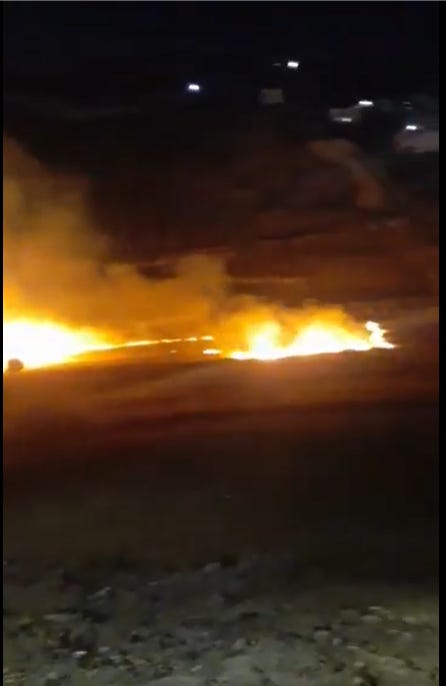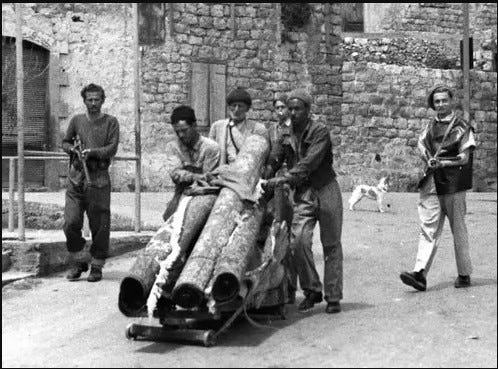In the early hours of June 13, Israel unleashed Operation Rising Lion, a meticulously planned campaign of airstrikes and targeted assassinations across more than a dozen locations deep within Iranian territory. Under the cover of darkness, Israeli jets struck over 100 strategic sites—nuclear facilities at Natanz have been struck. Facilities at Khondab, and Fordow have also been mentioned as beeing attacked, but no credible reports of this as of yet. Other targets include missile factories; and residential compounds housing senior military figures. The operation succeeded in killing at least nine top generals of the Islamic Revolutionary Guard Corps (IRGC) and prominent nuclear scientists such as Fereydoon Abbasi and Mohammad Mehdi Tehranchi, alongside 104 other personnel and civilians, leaving over 380 wounded .
Yet the true horrors of this strike lie less in its battlefield accomplishments and more in the political theatre that enabled it. While U.S. envoys feigned “de‑escalation” in Rome and Muscat, American and British intelligence—according to multiple reports—fed Mossad real‑time location data on Iran’s leadership bunkers and nuclear sites, synchronising timing to catch Tehran off‑guard. Iran’s negotiators were led to believe that dialogue might avert further bloodshed, even as plans for the deadliest operation since the Iran–Iraq War were being finalised behind their backs . This was not diplomacy. This was perfidy.
A History of Covert Strikes and Counterstrikes
The Damascus consulate strike on 1 April 2024 marked the opening salvo in this lethal game. Israeli F‑35s bombed the consular annex of Iran’s embassy in Mezzeh, killing 16 people—including Brig. Gen. Mohammad Reza Zahedi and other IRGC officers—inside what is ordinarily protected diplomatic grounds. Syria’s state media and Iran denounced it as a “terrorist attack,” yet Washington’s official line was muted, offering expressions of “concern” without blame.
Just under two weeks later, Operation True Promise I unfolded. On 13–14 April 2024, Iran’s IRGC and allied militias unleashed swarms of over 300 cruise missiles and kamikaze drones from Iran, Iraq, Lebanon, and Yemen, aiming to punish Israel for the Damascus strike. Though most weapons were intercepted, several missiles struck Nevatim and Ramon airbases in southern Israel, causing minor damage and psychological terror.
Israel’s reply that same month was measured: a limited strike on an air‑defence radar near key nuclear facilities on 19 April 2024, a token gesture rather than a strategic blow .
Escalation and the Second “True Promise”
The spring skirmishes might have seemed contained, but tensions only deepened. On 26 October 2024, Israel launched Operation Days of Repentance, its largest-ever strike on Iranian soil before June’s assault. Three waves of F‑35s, supported by air‑launched cruise missiles, pounded 20 sites across Iran, from missile factories in Khojir to a nuclear‑research facility in Parchin. Western capitals, having quietly vetted the targets, celebrated the pre‑emptive nature of the strike—even as it risked a wider conflagration .
Tehran responded swiftly on 1 November 2024 with True Promise II, launching approximately 200 ballistic missiles in two waves at Nevatim and Tel Nof airbases, as well as Mossad’s presumed headquarters. Though most missiles were downed by Arrow and Patriot batteries, debris killed one Palestinian civilian and wounded several Israelis and Jordanians. Iran framed this as self‑defence, a moral counterweight to Israel’s aggressive posture .
The Decisive Blow—and the Betrayal
By June 2025, Israel had accumulated years of intelligence on Iran’s nuclear programme, including information reportedly obtained with input from the IAEA—intelligence gathering accelerated amid diplomatic efforts that many foreign capitals publicly professed to support but privately undermined.
Operation Rising Lion, according to multiple reports, combined Mossad sabotage teams disabling air-defences with the Israeli Air Force’s stealth fighters penetrating deep into Iranian airspace. The operation resulted in the targeted killing of IRGC Chief Hossein Salami and Armed Forces Chief of Staff Maj Gen Mohammad Bagheri, alongside leading scientists and senior military leaders.
Behind the scenes, U.S. naval destroyers, together with the Kingdom of Jordan, reportedly diverted potential Iranian missile barrages. In contrast, Saudi Arabia did not take such defensive measures and instead issued strong condemnation of the Israeli attack, with Crown Prince Mohammed bin Salman publicly denouncing the operation.
Iran’s Resilience and Retaliation
Iran’s leadership, though stunned, proved both prepared and resolute. Within hours of the June 13 assault, Tehran launched a complex missile‑drone barrage at Israeli population centres—including Jerusalem and Tel‑Aviv—killing at least three civilians and wounding dozens more. Iran also threatened to strike U.S. and British bases: in Iraq, three drones targeted the Ain al‑Asad air base housing U.S. forces—each was shot down—and while Iranian leaders vowed to attack UK facilities, no British base was hit.
Most of the barrage was intercepted by Israeli, U.S., and Jordanian air-defences, blunting much of the firepower. Jordan reportedly shot down an Iranian Shahed drone, which then caused a fire in a civilian area. Critics argue that the Jordanian regime is endangering its own population to shield Israel—intercepting Iranian drones while simultaneously allowing Israeli jets to use Jordanian airspace to strike Iran. Jordan’s claim that it downed drones to “ensure they landed on Jordanian territory” is absurd, since this guaranteed precisely that outcome.
Supreme Leader Ali Khamenei swiftly appointing successors to the slain commanders. The IRGC’s new leadership vowed to widen the conflict, including potential cyber‑attacks on Israeli critical infrastructure and renewed support for Hezbollah and the Houthis .
Western Hypocrisy—and the Human Cost
Through each escalation, Western governments have maintained a veneer of probity: “We seek dialogue,” they proclaim, even as they supply the missiles, satellites, and intelligence that make such strikes possible. They veto UN resolutions condemning Israeli attacks and block any meaningful restraint on U.S. allies. The operation bears the hallmark of Washington’s hidden hand, reminiscent of Ukraine’s “spiderweb” strike deep in Russian territory, further underscoring U.S. involvement in both.
Meanwhile, the people of Gaza—who have endured over 600 days of total siege, starvation‑level blockades, and relentless bombardment—watch the spectacle in silence. Over 50,000 Palestinians have been killed, hospitals razed, water and electricity severed. Institutions that might have offered refuge lie in ruins. Yet the world’s most powerful nations look away until their own citizens, running for shelters in Tel‑Aviv, taste the terror they have long enabled. And the hypocricy when israelis complain about civilian deaths.
The Mask of Diplomacy Has Fallen
The West’s so-called “rules-based order” is a cloak for realpolitik: diplomacy as deception, negotiations as pretext, human rights as afterthought—or a weapon used only against the weak, never our allies.
If there is any hope for peace, it must begin with truth: acknowledging the betrayals that led to this carnage, holding the enablers to account, and refusing to let the theatre of diplomacy conceal the machinery of war. The rules cannot be different for friends and foes; justice must not be conditional.
And perhaps, before Israel is ready to pursue a just peace, it will need to reckon with the consequences of its own actions—because until it has tasted even a fraction of what it has inflicted on Gaza, there may be no comprehension of the depth of its crimes.
All articles on Diaspora Dialogue are free to read for one year from publication. If you’ve enjoyed this piece and would like to support my work, you can do so by subscribing, or by buying me a coffee. Thank you for reading and being part of the dialogue!









